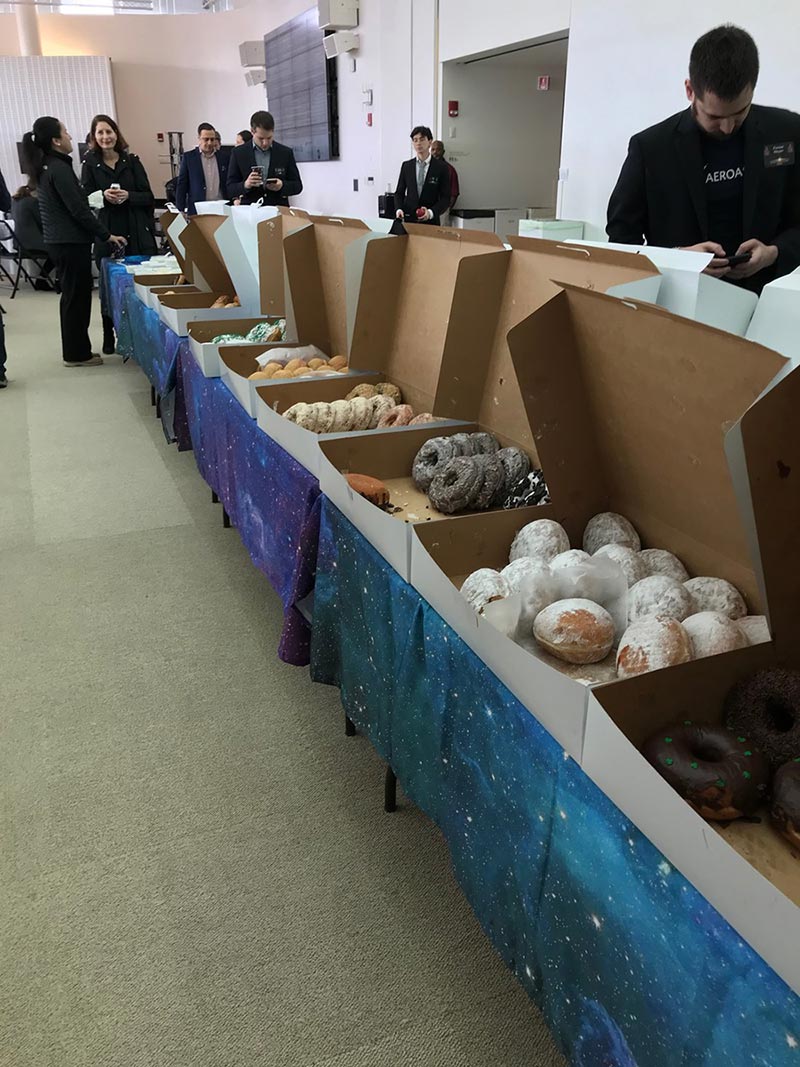卫星行业初创企业将遭遇困境
|
四年以来,麻省理工学院一直在举行专注于企业家的新太空时代大会。该会议的变化速度之快,颇为令人侧目。首先,与2019年的会议相比,第一届大会召开的会议室很小,也没有业界大拿参加,更没有美味的早间点心。但更为重要的是,关注的焦点发生了两个方面的变化。 |
MIT has been holding its entrepreneur-focused New Space Age Conference for four years, and it’s notable how quickly things have changed. For one, the first iteration fit in a smaller room and lacked the giant and delicious mid-morning doughnuts supplied for the 2019 conference. But more importantly, the focus has shifted in two ways. |

|
回想2016年,波音曾是这一领域的大拿,曾经主宰了太空经济数十年,为所有的初创企业以及观众席中即将创业的人士提供了其真知灼见。但公司研发别动队的负责人纳韦德·胡赛因听起来则有点抵触的意味,而且他坚持认为:“我们做好了竞争的准备。”它似乎成了一种预兆,就在大会开始的前一天,埃隆·马斯克的SpaceX将其可重复使用的火箭降落在了海上的一艘驳船上。事后,人们明显发现,这一领域改朝换代了。 在今年的新太空时代大会上,SpaceX成为了大拿,而且其火箭技术已经从演示阶段发展至技术成熟的商业阶段。 卫星入轨成本的大幅降低将让数十乃至数百家新初创企业拿到用于开展业务的资金,继而启动新一轮的太空竞赛。Starburst Aerospace Accelerator的执行合伙人范·厄斯帕博迪可能没有意识到其声明的戏剧性色彩:“十年前,来自于洛克希德和波音的高管会来这里参会。”(当时仅有三个,范·厄斯帕博迪。) 但厄斯帕博迪还在2019年的会议中提到了另一个常见的观点,它代表了自2016年以来出现的第二个变化。然而在当时,初创企业依然在试图博得硅谷的欢心,如今,它们似乎在这一方面做得过于成功。厄斯帕博迪担心,过多的资金流入了过多的初创企业,而这些企业都在追逐着卫星发射领域为数不多的雷同机会。他讽刺地说道:“不会投资的人大有人在。” 令人印象最为深刻的首席执行官莫过于HawkEye 360的约翰·瑟拉非尼,该公司将发射多枚卫星,跟踪地面的各类无线电波信号。他解释道,公司的卫星可以帮助阻止“海事环境中的危险分子”从事数十亿美元的“负面外部活动”。什么?他们要去捉海盗! 除了追逐有限机会的过度资金之外,SpaceAble的首席执行官朱丽恩坎特格雷尔从独到的角度解释了为什么太空市场的初创企业可能会开始出现坠毁的情况。实际上,轨道上能够容纳的卫星数量是有限的,否则,碎片和碰撞将成为一个大问题。他警告说:“我们无法继续将更多的物体送入太空。在某些方面,我们需要停下来思考一下低轨环境。”但愿明年的大会上不会出现任何需要讨论的实际案例。(财富中文网) 译者:Charlie 审校:夏林 |
Way back in 2016, Boeing was the big incumbent, the company that had dominated the space economy for decades, offering its wisdom to all the startups and would-be startups in the audience. But Naveed Hussain, who headed the company’s R&D skunkworks, sounded a bit defensive as he insisted: “We are ready to compete.” Portentously, just the day before the conference, Elon Musk’s SpaceX landed one of its reusable rockets on a barge floating at sea. In hindsight, it’s obvious that a changing of the guard had occurred. At this year’s New Space Age conference, SpaceX was the big incumbent and its rocket technology has now moved from the demonstration stage to the workman-like commercial phase. Shattering the cost of putting satellites in orbit has allowed dozens, perhaps even hundreds, of new startups to attract funding and go into business, kicking off a new space race. Van Espahbodi, managing partner of the Starburst Aerospace Accelerator funding many of those startups, may not have realized the irony of his statement that “ten years ago there would have been executives from Lockheed and Boeing in this room.” (It was only three, Van.) But Espahbodi also sounded another common refrain from the 2019 edition of the conference, one that marks the second shift from 2016. While back then startups were still trying to figure out how to woo Silicon Valley, now it seems they may have succeeded too well. Espahbodi worried that too much money may have flowed into too many startups all chasing the same few satellite opportunities. “There’s lots of not so smart money out there,” he quipped. The most impressive CEO on stage may have been John Serafini from HawkEye 360, which is launching satellites to track all manner of radio frequency signals on the ground. The company’s satellites could help stop “bad actors in a maritime environment” from creating billions of dollars of “negative externalities,” he explained. What? They’re going to catch pirates! Aside from the excess financing chasing too few ideas, Julien Cantegreil, the CEO of SpaceAble, offered a unique reason why startups in the space market may start crashing out–literally. There’s actually a limit to how many satellites can go into orbit before debris and collisions become a big problem. “We cannot continue to send more objects to space,” he warned. “At some point we need to stop and think about the low earth (orbital) environment.” Hopefully there won’t be any actual examples of that problem to discuss at next year’s conference. |













